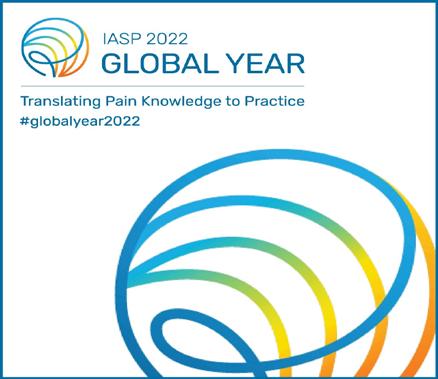
4 minute read
Paediatric chronic pain prevalence in low- and middle-income countries: A systematic review and meta-analysis
from APS OCT22 eNews
by auspainsoc
Journal Reference: ZW Liao, C Le, JM Kynes, JA Niconchuk, E Pinto, HE Laferriere. Lancet eClinical Medicine 2022;45:101296
DOI: https://doi.org/10.1016/j.eclinm.2022.101296
Reviewer: Louise Jeynes, Pain Fellow, Children’s Pain Management Service, Department of Anaesthesia and Pain Management, Royal Children’s Hospital, Melbourne
Review of Article
All the studies from low- and middle-income countries (LMIC) that were published up to the 7 January 2022 in those 19 years or younger with chronic pain defined as per ICD-11 coding (i.e., lasting three or more months in duration).
Aims
The aim of the study was to characterise the current literature on the prevalence of paediatric chronic pain in low- and middleincome countries.
Method
The reviewers undertook a systematic review and meta-analysis search using four conceptual blocks: pain, paediatric, geographical, and epidemiological. A LMIC was defined as a country with gross national income per capita of less than $12,535 in 2019. All languages were included, with translation using Google Translate as necessary. The data was extracted by two independent reviewers, and statistical methods (general linear mixed model with logit transformation and random effects model) were selected to attempt to control for heterogeneity. Subgroup analysis was undertaken by sex, and odds ratio was undertaken for pain type. A risk of bias assessment and sensitivity analysis were also undertaken.
Results
Of the 2877 articles identified, 27 studies where suitable for review. There were 24 cross sectional studies, two prospective studies, and one retrospective study. Study size varied from 209 – 92,544 with an absolute mean of 5094, and a trimmed mean (excluding uppermost and lowest value) of 1792.
These studies covered 20 LMICs from six regions, with only one being a multicountry study covering seven LMICs, from which data was extracted separately. Most studies focused on headache, followed by musculoskeletal pain, abdominal pain, generalised/fibromyalgia pain, and temporomandibular joint (TMJ) pain.
The studies identified an overall prevalence of paediatric chronic pain of 8% (95% confidence interval [CI] 6-10%). With respect to specific conditions, general/multi-site pain had a prevalence of 20% (95% CI 16-25%), musculoskeletal/back pain 9% (95% CI 7-13%), abdominal pain 7% (95% CI 5-10)%, headache 4% (95% CI 2-10%), fibromyalgia 3% (95% CI 1-10%), and TMJ dysfunction prevalence of 15% (but this was a single study). A higher prevalence was noted in females for chronic headache, abdominal, and general/multi-site pain. The prevalence of musculoskeletal pain was similar between sexes.
Conclusions
The data collected in this meta-analysis is comparable to that of the Global Burden of Disease 2013 (1) study on children and adolescents: the larger range in the prevalence seen in the previous study may be secondary to a less specific chronicity of pain. The prevalence of recurrent abdominal pain seen in LMIC children appears to be comparable to those from high income countries (HIC). The prevalence of fibromyalgia, whilst it is half that of the adult population from LMIC, it is comparable to that seen in children from HIC. Generalised pain (excluding fibromyalgia diagnosis) is higher in children from LMIC compared to adults (12% vs 20%).
The reviewers outlined some of the limitations of the study in terms of:
1. Geography: only 9% of the studies come from Sub-Saharan Africa and none from Central America
2. Definition: the ICD-11 definition of chronic pain is only recent, therefore studies prior to when this definition came in have differing reference ranges
3. Bias: risk of recall bias due to the selfreported nature of pain.
Reviewer’s critique & take-home messages
This article gives an insight into the prevalence of pain in LMIC and is the first meta-analysis of the data. There were no randomized controlled trials included in the meta-analysis; most were cross-sectional studies of reasonable sized populations, allowing for conclusions to be drawn. An increased prevalence of various chronic pain conditions has previously been reported in HIC in girls, in older children, and in those of lower socioeconomic status (2). Headache and musculoskeletal/back pain appear to be less prevalent in the LMIC population compared to the HIC population, while abdominal pain seems to have a similar prevalence. Generalised or widespread pain appears to be more prevalent in LMIC. There is significant variation in the rates of different disease processes globally with, LMIC seeing higher rates of certain multi-system disorders (e.g., sickle cell, HIV/AIDS, etc.). Cultural differences need to be considered in both the significance and the reporting of pain: are we using the correct scoring systems or measures and therefore comparing like with like?
Blog Web
for the study may not reflect the whole population, which can further under-estimate the prevalence.
What this study does bring is a demonstration that more work needs to be done in this area to support policy makers, to guide training provision in the different areas and the allocation of resources. A consistent definition of chronic pain is essential going forward ensuring more meaningful comparative data and therefore more useful results.
Declaration
The author has no conflict of interest to declare in reviewing this article.
References
1. Global Burden of Disease Pediatrics Collaboration, Kyu HH, Pinho C, Wagner JA, et al. Global and National Burden of Diseases and Injuries Among Children and Adolescents Between 1990 and 2013: Findings From the Global Burden of Disease 2013 Study. JAMA Pediatr. 2016 Mar;170(3):267-87. doi: 10.1001/ jamapediatrics.2015.4276. PMID: 26810619; PMCID: PMC5076765.
2. King S, Chambers CT, Huguet A, et al. The epidemiology of chronic pain in children and adolescents revisited: a systematic review. Pain. 2011 Dec;152(12):2729-2738. doi: 10.1016/j.pain.2011.07.016. PMID: 22078064
The reviewers recognise the limitations of their study (i.e., significant heterogeneity of the included studies) and had put interventions in place to moderate this. However, there is a risk of complex statistical analysis over-damping the numbers through trying to compensate for this heterogeneity. There is also a possibility of increased publication bias in LMIC due to more limited resources in these regions. Access to health care in some of these countries is very variable, and so those presenting themselves




